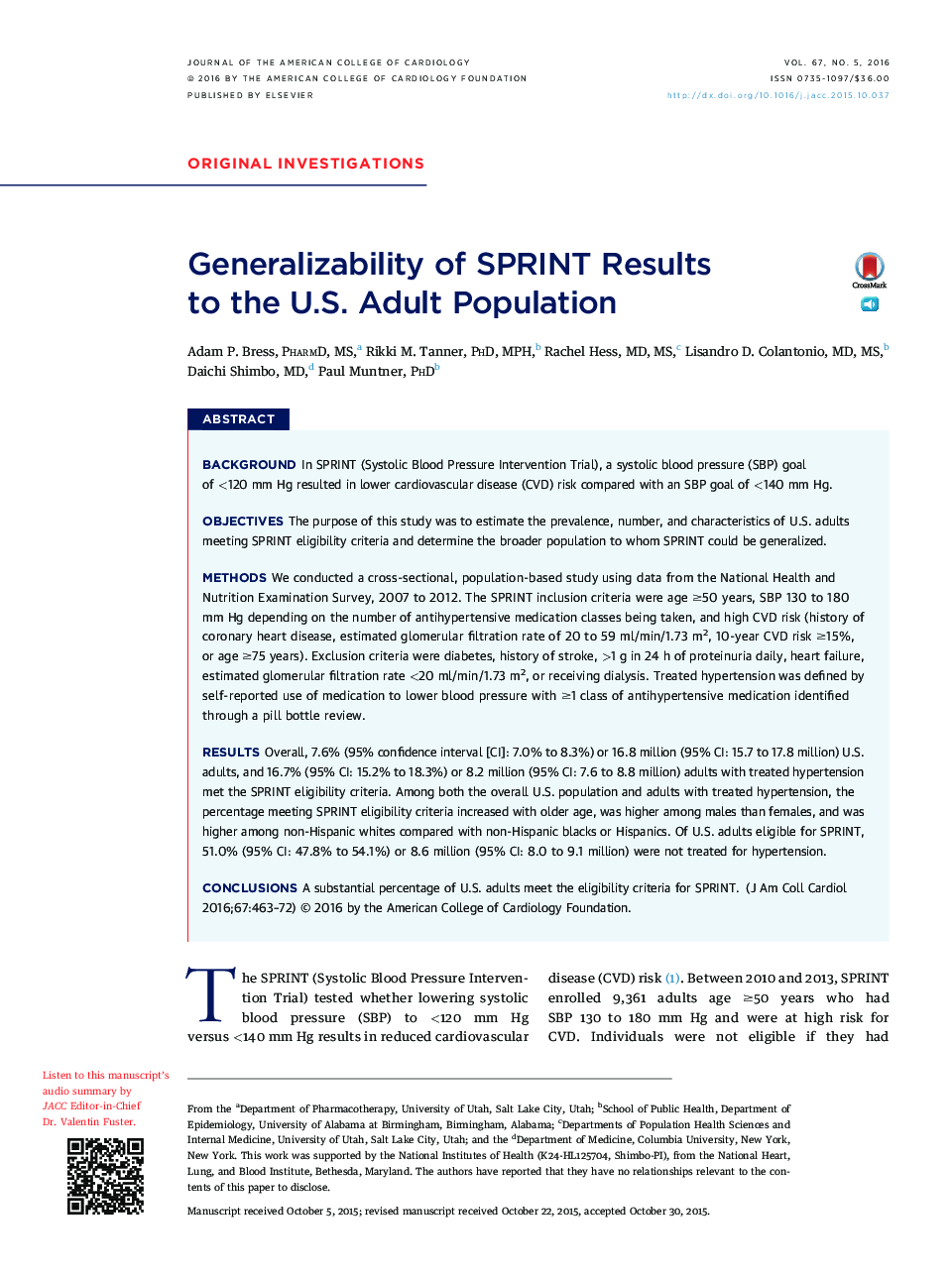| Article ID | Journal | Published Year | Pages | File Type |
|---|---|---|---|---|
| 5982240 | Journal of the American College of Cardiology | 2016 | 10 Pages |
BackgroundIn SPRINT (Systolic Blood Pressure Intervention Trial), a systolic blood pressure (SBP) goal of <120 mm Hg resulted in lower cardiovascular disease (CVD) risk compared with an SBP goal of <140 mm Hg.ObjectivesThe purpose of this study was to estimate the prevalence, number, and characteristics of U.S. adults meeting SPRINT eligibility criteria and determine the broader population to whom SPRINT could be generalized.MethodsWe conducted a cross-sectional, population-based study using data from the National Health and Nutrition Examination Survey, 2007 to 2012. The SPRINT inclusion criteria were age â¥50 years, SBP 130 to 180 mm Hg depending on the number of antihypertensive medication classes being taken, and high CVD risk (history of coronary heart disease, estimated glomerular filtration rate of 20 to 59 ml/min/1.73 m2, 10-year CVD risk â¥15%, or age â¥75 years). Exclusion criteria were diabetes, history of stroke, >1 g in 24 h of proteinuria daily, heart failure, estimated glomerular filtration rate <20 ml/min/1.73 m2, or receiving dialysis. Treated hypertension was defined by self-reported use of medication to lower blood pressure with â¥1 class of antihypertensive medication identified through a pill bottle review.ResultsOverall, 7.6% (95% confidence interval [CI]: 7.0% to 8.3%) or 16.8 million (95% CI: 15.7 to 17.8 million) U.S. adults, and 16.7% (95% CI: 15.2% to 18.3%) or 8.2 million (95% CI: 7.6 to 8.8 million) adults with treated hypertension met the SPRINT eligibility criteria. Among both the overall U.S. population and adults with treated hypertension, the percentage meeting SPRINT eligibility criteria increased with older age, was higher among males than females, and was higher among non-Hispanic whites compared with non-Hispanic blacks or Hispanics. Of U.S. adults eligible for SPRINT, 51.0% (95% CI: 47.8% to 54.1%) or 8.6 million (95% CI: 8.0 to 9.1 million) were not treated for hypertension.ConclusionsA substantial percentage of U.S. adults meet the eligibility criteria for SPRINT.
